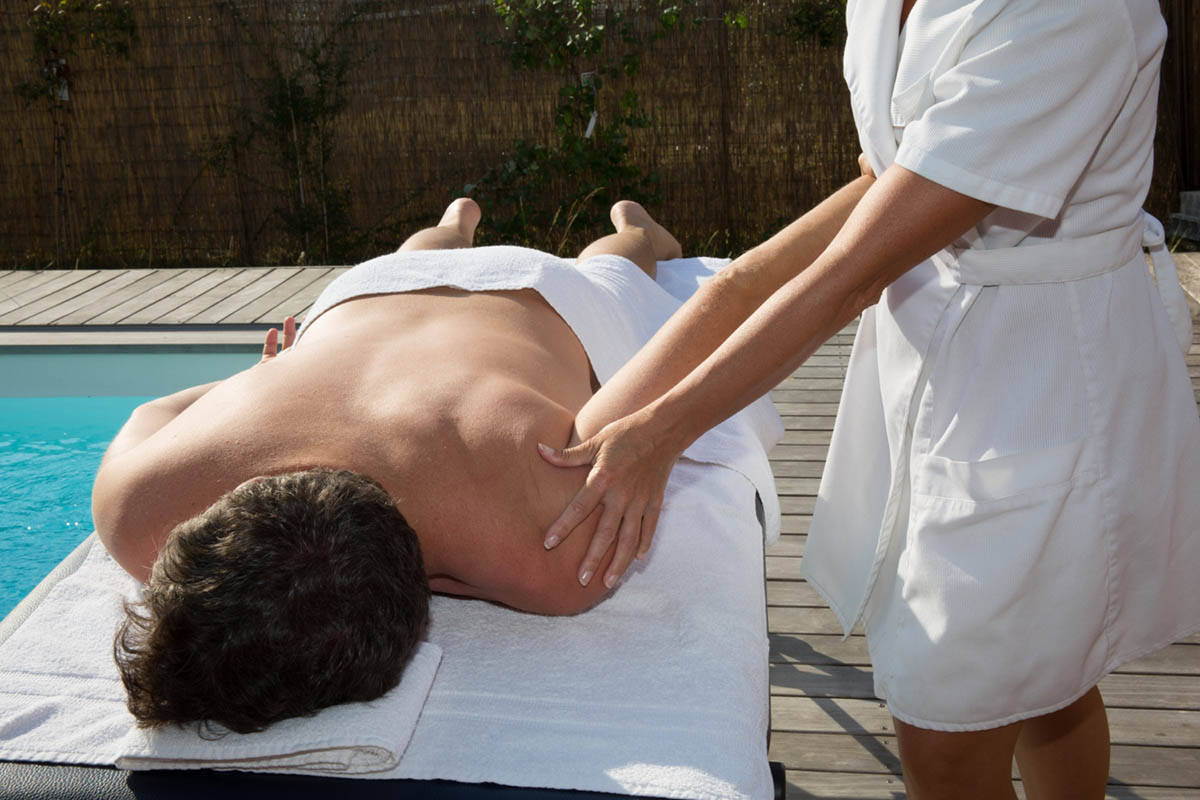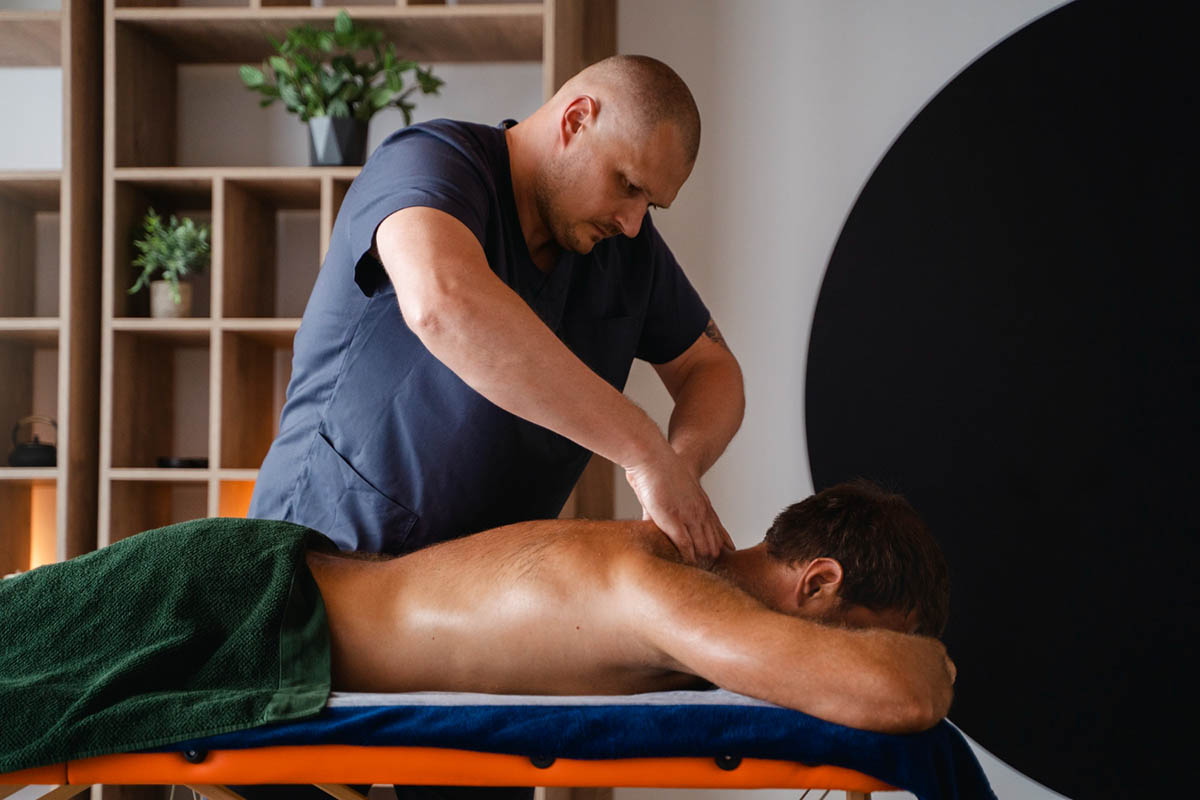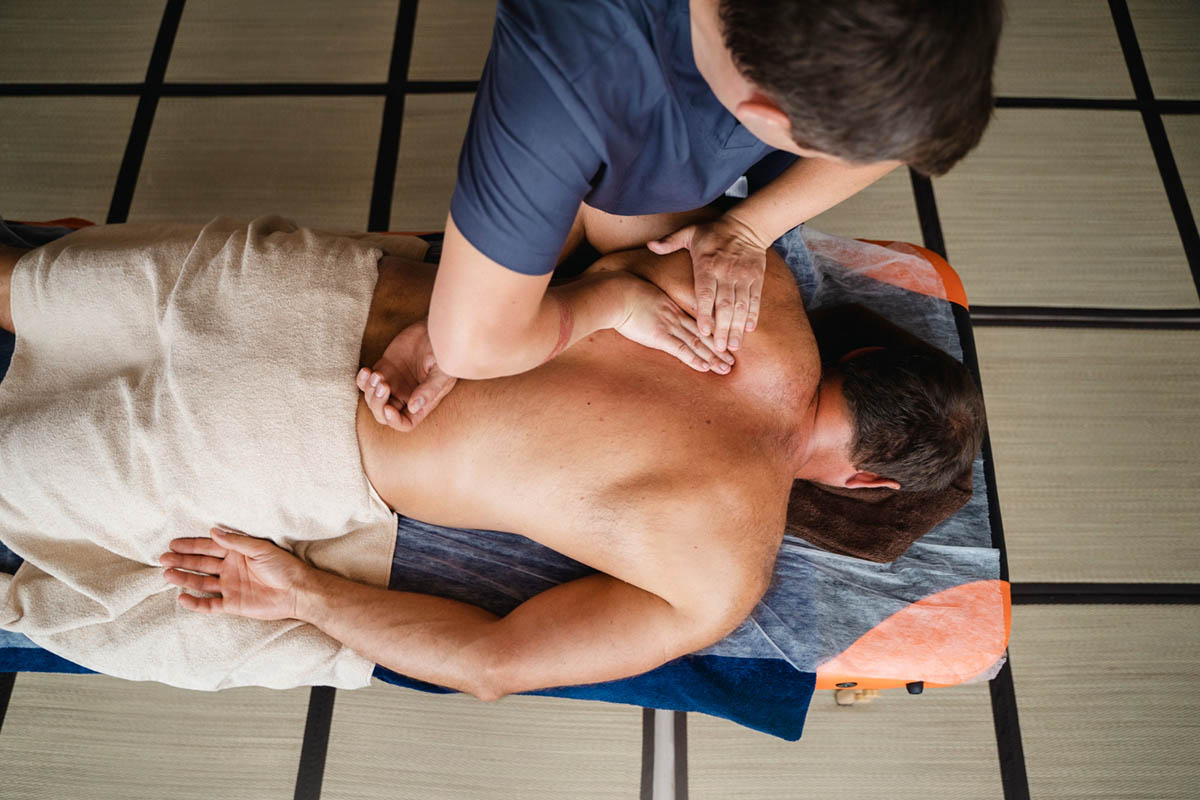Massage therapy is a popular treatment for alleviating muscle pain, enhancing flexibility, and promoting overall well-being. Two commonly discussed types of massage are sports massage and deep tissue massage. Although they share similarities, they serve different purposes and offer distinct benefits. In this blog, we will delve into the differences between sports massage and deep tissue massage to help you understand which might be more suitable for your needs.
Sports Massage vs Deep Tissue Massage
Sports massage focuses on enhancing athletic performance and aiding recovery, tailored specifically for athletes and active individuals. Deep tissue massage targets tense muscles and chronic pain through deeper pressure. Both techniques promote relaxation and healing, but their applications and techniques differ to cater to distinct needs.
What is Sports Massage?
Sports massage is a specialized form of massage therapy designed to address the needs of athletes and active individuals. This technique is used to prevent injuries, enhance performance, and facilitate recovery. It focuses on specific muscle groups used during sports and physical activities.
Common Areas Targeted
Sports massage typically targets muscles that are heavily utilized during athletic activities. These areas can include the hamstrings, quadriceps, calves, shoulders, and back. By focusing on these muscle groups, sports massage helps reduce muscle tension and improve overall flexibility.
Techniques Used
Sports massage incorporates various techniques, such as kneading, friction, and stretching. These methods help loosen tight muscles, improve blood circulation, and enhance range of motion. The pressure applied during a sports massage can vary, depending on the individual’s needs and the intensity of the activity they engage in.
Benefits of Sports Massage
The benefits of sports massage are noteworthy and include enhanced performance through improved flexibility and reduced delayed onset muscle soreness (DOMS), even though research does not directly link sports massage to performance improvement. Comparing deep tissue vs sports massage reveals that while both offer valuable benefits, their focus and techniques differ significantly. Sports massage therapy can aid in stress reduction and improve energy levels by targeting muscular tension through various types of treatments. Techniques like passive stretching and joint mobilization help in muscle fiber relaxation and pain in muscle relief, making it ideal for professional athletes and individuals dealing with repetitive injuries.
Additionally, regular sports massages play a crucial role in injury prevention by identifying and addressing muscle imbalances or potential issues before they escalate into injuries. The technique also promotes faster recovery by increasing blood flow and alleviating muscle tension, which helps athletes bounce back more quickly after intense physical activity. Furthermore, sports massage effectively reduces tightness in specific muscle groups, ultimately enhancing overall mobility.
What is Deep Tissue Massage?

Deep tissue massage is a technique that focuses on the deepest layers of muscle and connective tissue. This type of massage is intended to address chronic muscle pain and tension, making it suitable for individuals with persistent issues or specific areas of discomfort. Deep tissue massage therapy employs deep pressure and slow strokes to target muscle fibers and relieve chronic injuries or repetitive movements. Techniques like deep tissue massage techniques and circular movements are used to alleviate muscular pain and myofascial release.
Common Areas Targeted
Deep tissue massage often targets areas of chronic pain or stiffness, such as the lower back, shoulders, neck, and legs. It is particularly effective for muscles that are deeply embedded and require more intense pressure to release tension.
Techniques Used
Deep tissue massage employs slower strokes and more intense pressure than other forms of massage. Techniques used include deep finger pressure, elbow work, and sustained pressure on specific points. These methods help break down scar tissue and relieve muscle knots.
Benefits of Deep Tissue Massage
Deep tissue massage offers several advantages, including effective pain relief, as the focused pressure assists in alleviating chronic discomfort. Research indicates that when combined with stretching, deep tissue massage can significantly enhance range of motion (ROM) and improve waist function (p<0.05). Additionally, it targets the deeper muscle layers, effectively releasing chronic tension and enhancing overall flexibility. Mobility physical therapy can complement deep tissue massage to further improve flexibility and range of motion. Furthermore, the technique promotes improved circulation by increasing blood flow to the deeper muscle tissues, which aids in the body’s healing process.
Key Differences Between Sports Massage and Deep Tissue Massage
Sports massage is specifically designed to enhance athletic performance and aid in recovery, focusing on muscle groups used in sports. In contrast, sports vs deep tissue massage highlights that deep tissue massage targets chronic pain and tension in deeper muscles for overall pain relief. While both techniques use firm pressure, sports massage incorporates rhythmic movements and stretching elements to improve flexibility, while deep tissue massage employs slower techniques to address specific pain points and muscle knots.
Focus and Goals
Sports massage emphasizes enhancing athletic performance and facilitating recovery by targeting muscle groups utilized in sports activities. In contrast, deep tissue massage primarily aims to alleviate chronic pain and tension in deeper muscle layers, providing overall relief.
- Sports Massage: Sports massage focuses on preventing injuries, enhancing athletic performance, and aiding recovery. Athletes and active individuals often use it to address muscle fatigue and prevent injury.
- Deep Tissue Massage: Deep tissue massage is primarily used to address chronic muscle pain and tension. It targets deeper muscle layers and connective tissues to provide relief from long-standing issues and improve overall muscle function.
Methods
Sports massage utilizes rhythmic movements and stretching techniques designed to enhance flexibility and performance. In contrast, deep tissue massage employs slower, more focused strokes to target specific muscle knots and chronic tension, promoting overall relaxation and pain relief.
- Sports Massage: Sports massage uses techniques such as kneading, friction, and stretching to improve flexibility and reduce muscle tension. The pressure applied can be moderate to intense, depending on the individual’s needs.
- Deep Tissue Massage: Deep tissue massage involves slower strokes and more intense pressure to reach deeper muscle layers. Techniques include deep finger pressure and elbow work, which aim to break down scar tissue and relieve muscle knots.
Duration and Frequency
Sports massage sessions typically last between 30 to 90 minutes, depending on an athlete’s specific needs and training schedule. Deep tissue massage sessions often range from 60 to 90 minutes, allowing ample time to address chronic pain and muscle tension effectively.
- Sports Massage: Typically, sports massage sessions last between 30 to 60 minutes. Frequency can vary based on activity level and individual needs, with some athletes opting for regular sessions before and after competitions.
- Deep Tissue Massage: Deep tissue massage sessions usually last between 60 to 90 minutes. Due to the intense nature of the massage, it is often recommended to have sessions less frequently, depending on the severity of muscle issues.
Similarities Between Sports Massage and Deep Tissue Massage
Both sports massage and deep tissue massage have several commonalities: they both focus on relieving muscle tension and enhancing flexibility, improving blood circulation to promote overall muscle health, and offering therapeutic benefits that can target specific pain areas and contribute to overall well-being.
Which Massage is Right for You?

Determining the right massage for you depends on your specific needs and activities. When considering deep tissue massage vs sports massage, if you’re an athlete looking to enhance performance and prevent injuries, sports massage may be the ideal choice, while deep tissue massage may be better suited for addressing chronic pain and tension in deeper muscle layers.
When to Choose Sports Massage
If you are an athlete or someone who leads an active lifestyle, sports massage is particularly beneficial for pre-event preparation. It helps you gear up for a competition or vigorous physical activity. It also aids in rapid recovery from muscle fatigue or soreness, ensuring that your body feels refreshed and ready. Additionally, if you aim to prevent injuries, sports massage can help you address any potential muscle imbalances before they escalate into more significant issues.
When to Choose Deep Tissue Massage
If you experience ongoing muscle pain or stiffness that affects your daily activities, deep tissue massage could be beneficial. It’s also an effective choice for targeting specific areas of tightness or muscle knots that require more intense pressure to alleviate discomfort. Additionally, if you are in the recovery phase following an injury and need to address deeper muscle issues, deep-tissue massage can provide the therapeutic relief necessary for a successful rehabilitation process.
Conclusion
Understanding the differences between sports massage and deep tissue massage can help you make an informed decision about which therapy best suits your needs. Both types of massage offer unique benefits and can be valuable tools in maintaining muscle health and overall well-being. Integrating these therapies with Progressive Mobility techniques can enhance their effectiveness, contributing to a more comprehensive approach to physical wellness.
Whether you’re an athlete looking to enhance performance or someone dealing with chronic muscle pain, incorporating the right type of massage into your routine can have a significant positive impact. Consult with a qualified massage therapist to determine the most appropriate therapy for your specific needs and goals.
FAQ’s
Which is better, deep tissue or sports massage?
The choice between deep tissue and sports massage depends on your specific needs. Sports massage is ideal for athletes and active individuals focusing on performance and recovery, while deep tissue massage is better for addressing chronic pain and muscle tension.
Is a sports massage a full body massage?
Sports massage can target specific muscle groups based on your activities or areas of concern. It is not necessarily a full body massage but can be tailored to address the muscles most used in your sports or physical activities.
Is a sports massage good for back pain?
Sports massage can be beneficial for back pain, especially if the pain is related to muscle fatigue or tension. For chronic or severe back pain, deep-tissue massage might be more effective in addressing deeper muscle layers.



